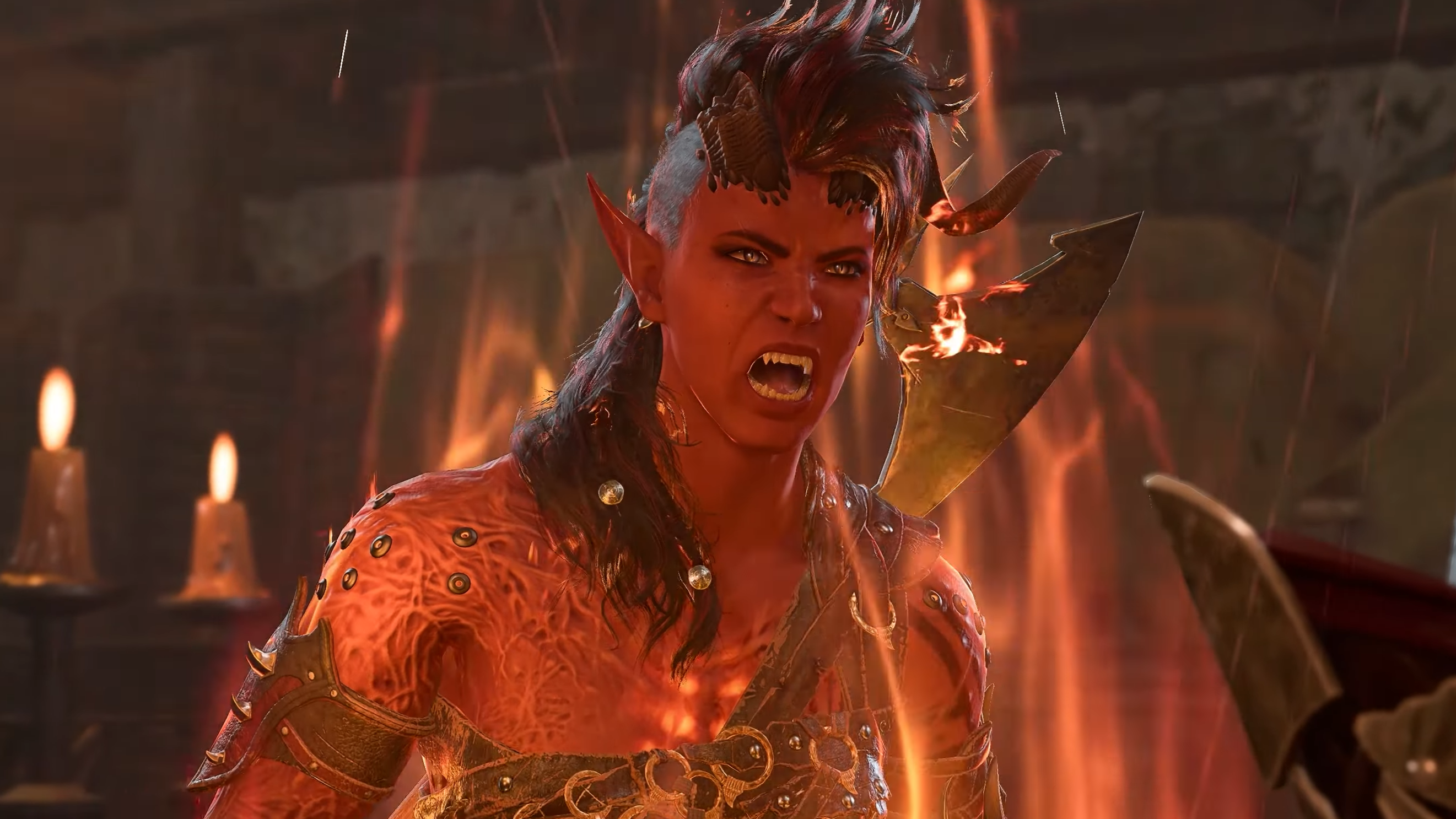
Karlach is one of Baldur's Gate 3's most beloved characters—and for plenty of good reasons. She's big, has potent golden retriever energy, and can probably bench press me—but she's also, like a lot of the game's cast, spectacularly well-written. Her journey of betrayal and punk-rock redemption is compelling and moving, to the point where the lack of a "perfect" ending was a point of controversy.
Broadly-speaking, I'm not on that particular conspiracy train—while I think from a critical standpoint the game's ending at launch felt a touch thin, that was later solved with a massive epilogue patch.
Regardless, Karlach's missing heart felt like such a central pillar of the character that I was shocked to learn, while attending BAFTA's "An Evening with Baldur’s Gate 3", that it was actually a somewhat late edition to everyone's favourite big tiefling wife.
During an interview (hosted by Jane Douglas) with Larian CEO and co-founder Swen Vincke, writing director Adam Smith, and lead writer Chrystal Ding, it was revealed that Karlach didn't get her infernal engine until much later in the creation process.
In fact, Karlach had the most changes overall, says Smith: "We had a lot of different concepts, and one of the last things that fell into place was the heart. We didn't have the heart for a long time—this person was [just] a fugitive from hell."
If you're familiar with Karlach's early access self, you'll likely be familiar with this engine-less tiefling. The party was iterated on plenty during the game's EA period—Wyll, for example, had an extensive rewrite somewhere along the river of development. Still, I'd always imagined that Larian had simply moved the reveal of Karlach's heart to Act 1 along with the character's visual redesign—since it's pretty hard to play coy about having a luminous ribcage.
"At some point we were looking for the extra coolness," Smith adds, though the team also wanted to answer the question of "'What is this character's thing about them that we can interact with, that we can engage with?' And we found this idea of this steampunk heart, this hell-heart, but yeah—for a long time, she didn't have it."
It was even late enough in the process, Smith jokes, to give teams responsible for cinematics a headache: "When you say to a lighting team and a cinematic team, 'by the way, she's now got a glowing metal heart in her chest', they say 'oh okay, really?' That was a good Wednesday."
However, the inverse is also true, as Vincke notes: "Some of these changes were also inspired by cinematic teams … 'You need to change this because otherwise where do we put our camera, there's going to be too much clipping going on, and so forth'—so really it's like many things about Baldur's Gate 3, it was teamwork that defined what the characters did."
That collaborative process, Vincke says, also expands to the players—such as the feedback-induced new ending for Karlach, which predated the epilogue patch considerably. If you want to watch the full talks from BAFTA's "An Evening with Baldur’s Gate 3", I'm told it'll be coming to the organisation's YouTube channel soon.







